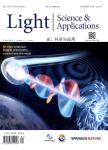版权所有:内蒙古大学图书馆 技术提供:维普资讯• 智图
内蒙古自治区呼和浩特市赛罕区大学西街235号 邮编: 010021

作者机构:Electrical and Computer Engineering DepartmentUniversity of CaliforniaLos AngelesCA 90095USA Bioengineering DepartmentUniversity of CaliforniaLos AngelesCA 90095USA California Nano Systems Institute(CNSI)University of CaliforniaLos AngelesCA 90095USAElectrical and Computer Engineering DepartmentUniversity of CaliforniaLos AngelesCA 90095USA David Geffen School of MedicineUniversity of California Los AngelesLos AngelesCA 90095USA
出 版 物:《Light(Science & Applications)》 (光(科学与应用)(英文版))
年 卷 期:2022年第11卷第9期
页 面:2225-2234页
核心收录:
学科分类:070207[理学-光学] 07[理学] 08[工学] 0803[工学-光学工程] 0702[理学-物理学]
基 金:National Science Foundation NSF
主 题:field. generalization holographic
摘 要:Deep learning-based image reconstruction methods have achieved remarkable success in phase recovery and holographic ***,the generalization of their image reconstruction performance to new types of samples never seen by the network remains a *** we introduce a deep learning framework,termed Fourier Imager Network(FIN),that can perform end-to-end phase recovery and image reconstruction from raw holograms of new types of samples,exhibiting unprecedented success in external *** architecture is based on spatial Fourier transform modules that process the spatial frequencies of its inputs using learnable filters and a global receptive *** with existing convolutional deep neural networks used for hologram reconstruction,FIN exhibits superior generalization to new types of samples,while also being much faster in its image inference speed,completing the hologram reconstruction task in~0.04 s per 1 mm^(2) of the sample *** experimentally validated the performance of FIN by training it using human lung tissue samples and blindly testing it on human prostate,salivary gland tissue and Pap smear samples,proving its superior external generalization and image reconstruction *** holographic microscopy and quantitative phase imaging,FIN and the underlying neural network architecture might open up various new opportunities to design broadly generalizable deep learning models in computational imaging and machine vision fields.